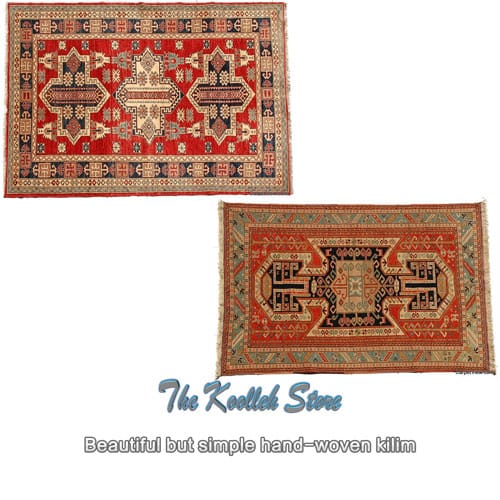Beautiful but simple hand-woven kilim

Afshin Babahosseini stated: kilim is a simple hand-woven (cotton or wool) and weft (wool) that is usually woven from the wool of domestic animals, which has its own design and is generally used as a carpet. had.
He added that the texture of the kilim may have other uses among the nomads, with variations, such as salt shakers, horseshoes, tent tapes, other than carpets: It can be said that in Central Asia, Eastern Europe and North Africa, wherever breeding Goats, sheep and camels are popular and its people specialize in carpet weaving. They also weave kilims. Turkmen, Caucasian, Turkish, Arab, etc. people produced and used hand-woven kilims.
Babahosseini reminded: In Persian literature, kilim with zillow or jajim, etc. is generally used in the same sense, but specifically kilim is a carpet that is prepared by weaving fabric on the strings that are woven on a raised hanger and from an auxiliary device such as a tube. And … it is not used that this is the difference between kilim and zillow or jajim and other types mentioned in the literature.
The head of handicrafts of Lorestan Cultural Heritage General Administration, stating that kilim is different from Zillow and Jajim, added: Kilim or plush is one of the types of underlayment and cover that is woven from silk, goat hair, fleece or other domestic animals. Glim has traditionally been used to cover floors, walls or bedspreads for portable animals, but is now also purchased as a modern cover for townhouses.
He continued by stating that the colors used in traditional kilims are vegetable: sometimes kilims are washed with tea and walnut skin for more effect and aging of the color.
Babahsini stated: The nomads and weavers of kilims do not have a limit on the size of the kilim and according to their needs, they weave the kilim in a small size for catching or larger to decorate (kilim what) or carpet and there is no standard in this regard. The kilims are also woven in the usual size for carpets, which can be 70 × 100, 100 × 150 cm, which is known as a half and a half, and the most common sizes are 2 متر 3 m and 3 × 4 m, the sides and … Cited.
The head of handicrafts of the General Directorate of Cultural Heritage of Lorestan continued: Different types of kilims have been produced in different areas according to the type of its texture and the method of payment, one-sided or two-sided. In the past, dyeing yarn with natural materials has been used in the weaving of kilims, and this tradition continues to this day in the weaving of high-quality and original traditional kilims.
Dyeing materials are generally made from plant and mineral sources, although animal sources such as red beans may also be used, he said. Usually, the yarns that are generally made from animal wool are dyed, and in the texture of the kilim, the combination of these dyed yarns results in a variety of designs.
Baba Hosseini, stating that yarn is generally obtained from cotton, but the texture of the kilim is also observed on wool yarns, added: Also, weft yarn is usually obtained from the wool of domestic animals and may be used in thinner kilims, which are more suitable for The decoration used is made of fluffy yarn (obtained from animal fluff).
The head of handicrafts of the General Directorate of Cultural Heritage of Lorestan stated: The kilims of all different regions of Iran can be distinguished and classified from the designs and raw materials used for its weaving.
He said that the most important texture of them is Sumac kilims, which are called verni in the local language, adding: In general, they use broken geometric designs with soft colors, and it is less possible to double He found the Il-Sun kilim similar in design and color. The best rosary in Iran is the Seven Horses, which is in six pieces with various colors.
Referring to Lori kilims, Babahosseini said: Lors weave good quality kilims, which are mostly characterized by black, green, blue and white colors and special designs of the region. The best texture for lorries is a large pouch for storing home furniture. They weave the edges to make them strong.

